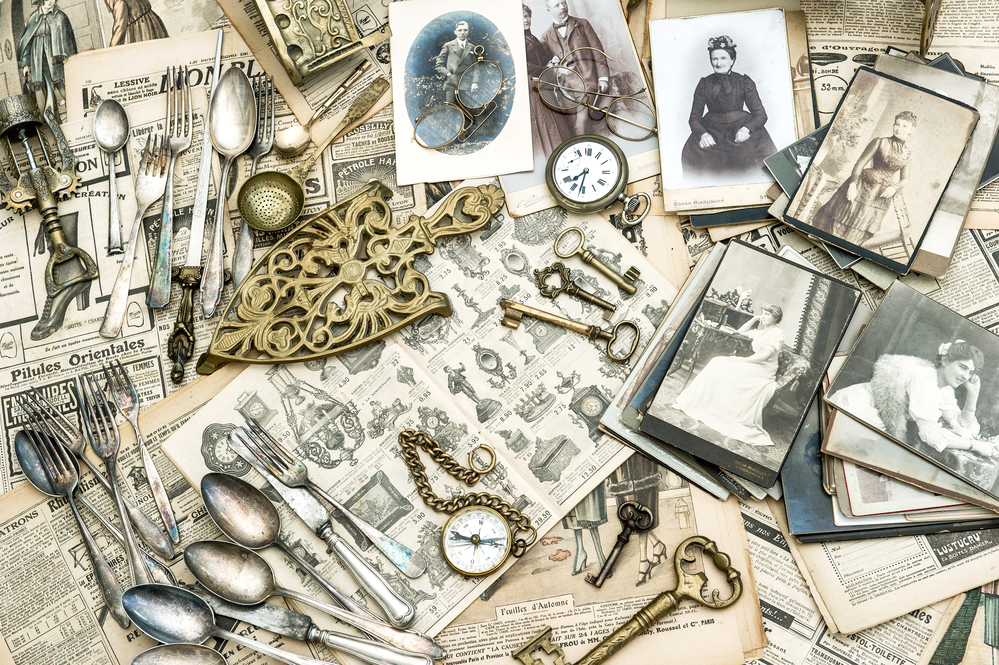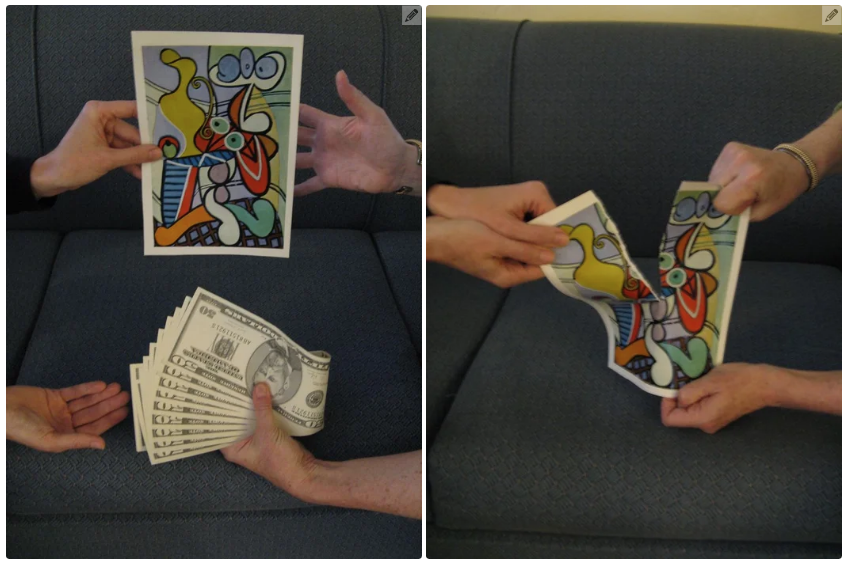
How to Fairly Divide Family Heirlooms without Fracturing your Family
We all know of people who had a falling out within their family over an inheritance. It is not only those with vast wealth who risk this. Sometimes families will fight over the simplest of bequests, especially one-of-a-kind family heirlooms. For this reason, it’s vital that we make plans for these bequests before our health declines so that our family will stay intact after we are gone.
This benefits our heirs financially as well as emotionally. They keep their relationships with siblings and children intact while they avoid costly legal battles. A few simple steps on your part on just how to divide your heirlooms will go a long way toward protecting those you hold most dear.
Teapot or Tesla?
Before you can plan your bequests, you need to know what people want. If you are a sharing family, then it may be easy. If not, this may be a major hurdle you will need to overcome so that your heirs don’t fight among themselves after you’re gone.
If you know your family members well, you’ll know who are the sentimental ones – those who would choose a chipped teapot that belonged to a great-great-grandmother over something of monetary value. You’ll also know the ones who are adding up each item’s dollar value and can tell you which items are worth what down to the penny.
Understand that some things have monetary value
Life isn’t fair and it’s not your job to make it so. However, the main cause for family infighting post-inheritance is a sense of injustice. If you know the general (or better yet, the precise) value of the items you are leaving loved ones, you can more easily make sure that no one is getting gypped when your heirlooms are finally divided amongst them.
Others have sentimental value
Money isn’t everything, especially when it comes to family treasures. The diamond that’s been passed down six generations, with its old mine cut and a chip on one side, may not have a high market value, but to some people in your family, it is priceless. And to one of your heirs, your button collection has more value than your framed Picasso.
Knowing that each of your heirs may assess the value of your property differently is a very good reason to bring them in on the decision process and not try to do it alone.
Create your list of bequests along with your family
The best way to know who wants what is to ask them. You can either ask people individually and hope everyone is in agreement, or call a family “Estate Planning Party” to work things out to everyone’s best interests.
One of the best ideas I’ve seen on divvying up family heirlooms is have a family auction with estate money. You can read more about it at Instructables. The idea is each item goes up for auction and each family member bids on it with their portion of the expected proceeds of the estate. If Sam really, really wants that china he can then outbid his siblings. Whatever he bid then comes out of his inheritance and back into the pot for the others. Those items that don’t get bid on, go into the general pool, probably to be sold at an estate auction later on.

From https://www.instructables.com/id/How-to-divide-the-Estate-Fairly-and-Happily/
Obviously there are challenges to the auction if no one knows how much cash there will be in the estate, but even if you’re playing with Monopoly money, it will help everyone get clear on what’s most important to them.
Be specific
When making your list you will want to make sure your executor or successor trustee (and everyone else in the family) knows which item you mean in each instance. Instead of saying “Aunt Jane’s broach to Jim,” add details. Perhaps, “Aunt Jane’s broach, with the 1.25-carat ruby and three .25-carat diamonds in the gold filigree, valued in Dec 2010 for $7,345 I leave to James Walter Buchanan, my son,” would leave less room for error.
Include photos
A picture is worth a thousand words, and since photos are necessary for insurance documents anyway, why not include them with your list? There will be no doubt which gold ring you’re leaving to Daniel that way, for example, and no arguments later.
Now that you have your list, make a will
It’s hard to face the reality that we will die. Human nature shies away from thinking about this truth. And as we get older, we may find ourselves feeling overwhelmed by the thought of planning and executing a will if we have not done so before. Luckily, it’s not that hard to do it yourself or with minimal professional help.
If you have an estate planning professional, they can draw up your will but they will charge by the hour. You tell them what you want and they put it into the proper language for the courts to honor. If you have it well-thought-out before you talk with them, it will save them time and you money.
If you are concerned about the cost of creating a will through a professional, then there are plenty of online options where you can find forms for your state. A Google search for “downloadable will for (type in your state)” will give you lots of free options. Simply download a standard form and fill it out with your wishes and have it witnessed by two people.
However, a word of caution. Though the documents you download look the same for everyone, it’s important to remember that everyone’s situation is different. Estate Planning Attorney Daniel DuRee cautions that a will is not one size fits all. Leaving out just one piece of pertinent information can be disastrous later on. That’s why he recommends having an attorney at least review your will.
Pick your executor
Your executor is tasked with following your instructions to make sure your estate is distributed according to your wishes. This may or may not be someone who benefits from your will, but it should be someone you trust to do what you want.
Provide details on all of your beneficiaries
Names change due to marriage and divorce, people move, and there can be more than multiple people who share a name within a family. The more specifics you give, like date of birth, previous names, or relationship to you, the more likely that the correct person will receive their bequest.
Add your list of special bequests in the form of a codicil
The best way to get your list of bequests into your will or trust (see below) is through a codicil. Why is that?
A codicil is an amendment to a will and is often used to change specific provisions of your will without the need to change the will itself. Because it’s not uncommon for family members to change their minds on their family heirloom choices, having your list of special bequests in a codicil makes it a lot easier and cheaper (if you have to hire an attorney) to make that change.
Don’t forget to get your codicil notarized. This is vital to avoid complications and costs if one of your heirs contests the trust or probate does not go smoothly for the will. Most banks provide this service to their customers for free. If you are housebound, you can have a notary come to your house for a fee.
Consider a trust
Most attorneys, including Daniel Duree (mentioned above), recommend a revocable living trust for those who are aging for a couple of reasons. A revocable living trust allows you to avoid probate upon your death. In essence, you create a private contract between yourself as the trust maker and the trust itself. You are the trustee while you are alive, then you pass that job on to the successor trustee when you die. No need for probate or the costs that come with it. Another benefit is that a will is on the public record, but a trust passes your belongings on the beneficiaries privately.
But another key consideration is that if you become mentally incapacitated, a revocable living trust can spell out the process by which that determination is made along with the way in which your financial affairs should be handled by your successor trustee.
In California if your estate totals more than $150,000 total value, you will need to create a trust if you want to avoid probate.
Expect some disappointment
Recognize that you can’t make everyone happy. The final decision rests with you and it’s your job, as the owner of the items to be passed along, to make the hard calls. In the end, your heirs must bow to your wishes. Softening the blow with explanations and understanding can help heal rifts before you are gone, but in the end, it is up to your family to respect your choices.
By approaching your family heirlooms and the distribution of them with resolve, organization, and foresight, you can nip some of the bad feelings that can grow between family members in the bud. Consideration for their wishes as you document your own can enable your children, step-children, grandchildren, and the rest of your family to get along. Plan ahead to keep passing on heirlooms from fracturing the family.

Matthew Voralik grew up working in the brick and mortar store after school and during the summers. When most boys his age were playing video games, he was assembling wheelchairs and hospital beds and showing people how to use all the things they sold in his dad’s store. Today he does the same thing for his online customers. This also makes America Discount Home Medical uniquely qualified to select and recommend the best products for our customers.
Tags: Wills






